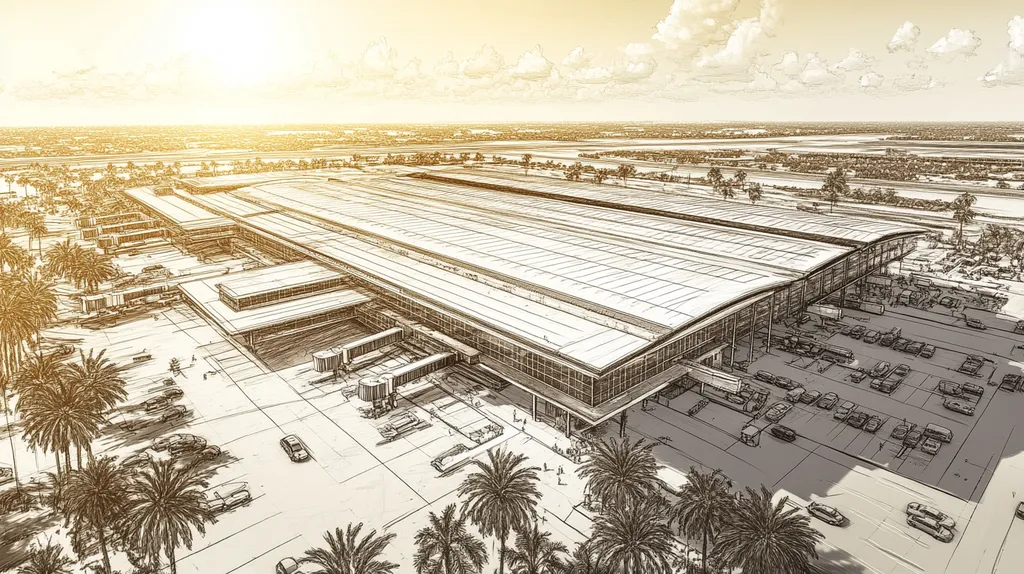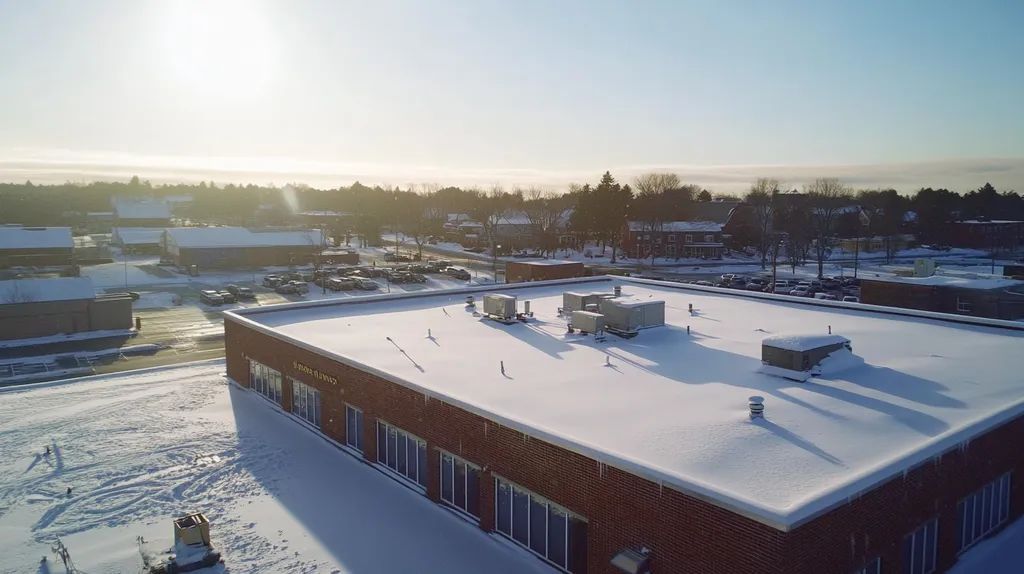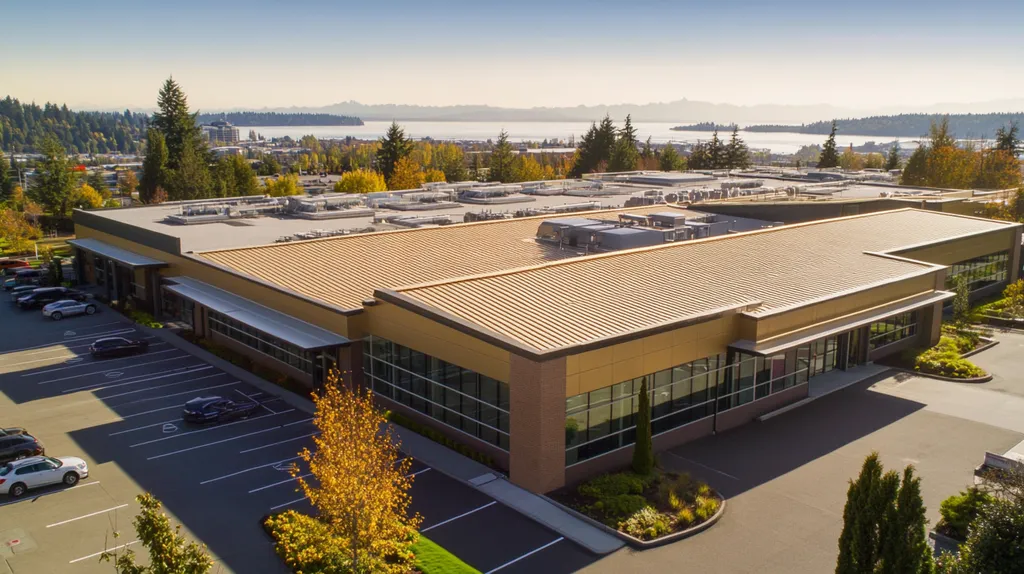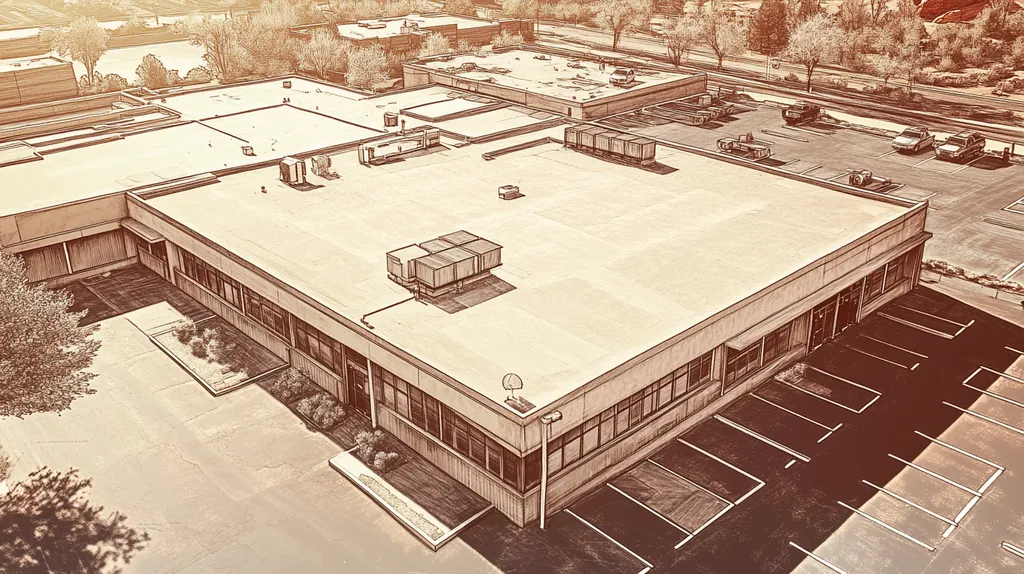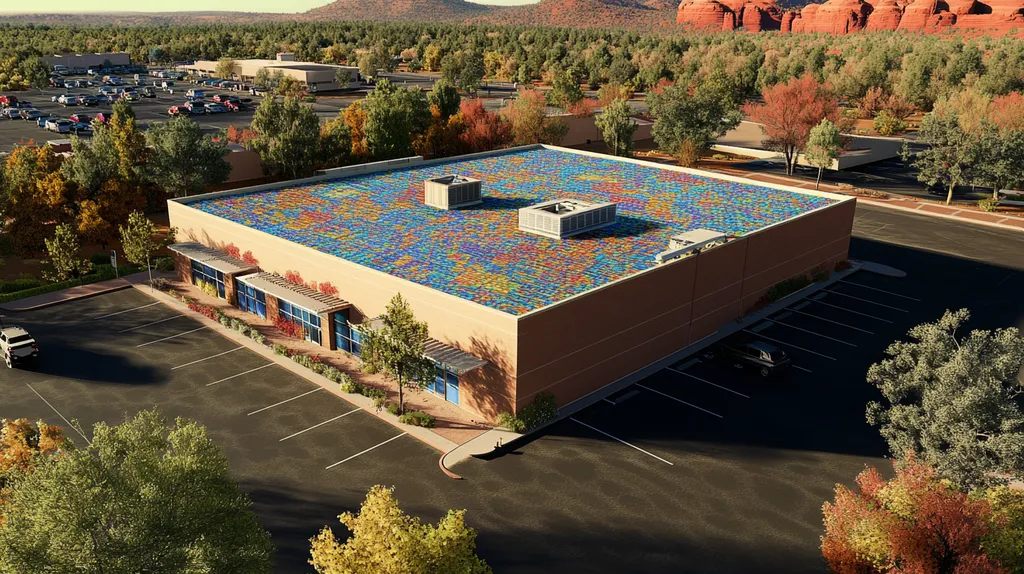Welcome to today’s Battle Royale featuring two roofing heavyweights: “TPO” in the east corner versus “PVC” in the west!
Tonight’s showdown pits these contenders against each other across six punishing rounds designed to test every aspect of their performance for Installation Cost Impact on ROI of Industrial Roofing Solutions.
At stake? Millions in potential costs, decades of building protection, and the critical performance demands of modern commercial and industrial facilities.
Our professional judging panel will evaluate each round on technical merit, real-world performance, and value delivery. After all six rounds, we’ll declare our ultimate champion.
Ladies and gentlemen, facility managers and building owners… it’s time to rumble!
ROUND 1: INITIAL COSTS & INSTALLATION
While roofing salespeople love throwing around fancy chemical formulas and lifecycle projections, let’s cut through the membrane mumbo-jumbo and talk cold, hard cash. With installation costs eating up to 60% of your roofing budget, picking between TPO and PVC isn’t just about materials – it’s about protecting your bottom line from taking a sky-high hit.
Material Expenses
TPO membrane pricing has become the darling of budget-conscious facility managers, typically running $2.50 to $5.50 per square foot. It’s like the Honda Civic of roofing materials – reliable, cost-effective, and gets the job done without breaking the bank.
PVC, meanwhile, struts around with premium pricing between $5 to $11 per square foot. Sure, it’s pricier than its TPO cousin, but calling it “expensive” is like complaining about the cost of insurance – sometimes paying more upfront keeps you from paying way more later.
For pure initial cost considerations, TPO claims an ADVANTAGE in this category, though this victory comes with some interesting caveats we’ll explore later.
Installation Complexity
Installing TPO is relatively straightforward – think “paint by numbers” versus creating a masterpiece. Its flexibility and lighter weight mean crews can cover more ground faster, with fewer specialized tools or techniques required.
PVC installation demands more finesse and expertise, like performing surgery rather than applying a bandage. The material’s rigidity and specific welding requirements mean more time, more skill, and inevitably, more labor costs.
The simplicity factor gives TPO another clear ADVANTAGE, though some might argue that easier isn’t always better.
Project Timeline
Time is money, and TPO installations move at the speed of business. A typical commercial project can be knocked out 20-30% faster than its PVC counterpart, minimizing disruption to your operations and your tenants’ patience.
PVC projects tend to move slower than a government permit approval. The additional care required for proper installation means more time on the roof – and more time means more money floating away in labor costs.
When it comes to getting the job done quickly and getting back to business, TPO scores another ADVANTAGE, completing its clean sweep of Round 1.
ROUND 1 WINNER: TPO
ROUND 2: DURABILITY & LIFESPAN
While Round 1 was all about the quick wins, Round 2 throws us into the endurance match where roofing choices come back to haunt – or help – your bottom line for decades. With replacement costs running north of $250,000 for a typical commercial building, picking the wrong material is like betting your retirement fund on a racehorse with a limp.
Weather Warriors
TPO membranes step into the ring with decent UV resistance and a reasonable defense against Mother Nature’s mood swings. Think of it as the welterweight contender – quick on its feet but sometimes struggles against heavyweight threats.
The real gut punch? TPO’s performance can vary wildly between manufacturers, making quality control about as predictable as a toddler’s dinner preferences. You’re looking at 15-20 years of service life – if everything goes perfectly.
Some TPO installations tap out early, especially in regions where the sun treats rooftops like an ant under a magnifying glass. ADVANTAGE: Undecided.
Chemical Champions
TPO puts up a decent fight against basic chemical exposure but starts sweating when faced with industrial-grade pollutants. It’s like bringing pepper spray to a gunfight – good enough for basic defense, but you wouldn’t want to test its limits.
PVC struts into this category like it owns the place, shrugging off industrial chemicals like they’re water off a duck’s back. Its molecular structure makes it practically immune to the nasty stuff that makes other membranes cry uncle.
When it comes to chemical resistance, PVC scores a clear ADVANTAGE, especially for facilities that handle harsh materials or operate in industrial zones.
Long-Term Performance
TPO’s track record is still writing itself, with some early installations showing their age faster than a Hollywood child star. The life-cycle costs can climb faster than expected when you factor in maintenance and potential early replacement.
PVC brings 20-30 years of reliable performance to the table, with some installations still flexing well past their warranty period. The higher initial investment typically pays off through reduced maintenance costs and extended service life.
The life-cycle costs of PVC’s superior durability become even more attractive when considering current inflation rates for materials and labor. (source: Garland Co)
In this crucial category, PVC lands another ADVANTAGE with its proven longevity and reliability.
ROUND 2 WINNER: PVC
ROUND 3: PERFORMANCE FACTORS
When your roof starts leaking during peak production hours or your energy bills soar higher than a weather balloon, suddenly those “minor” performance differences between TPO and PVC feel like million-dollar decisions. With replacement costs potentially hitting six figures, choosing the wrong membrane is like picking a smartphone based solely on its ringtone selection – you’re missing the features that really matter.
Durability and Weather Resistance
TPO enters this match with decent defensive moves, offering solid UV protection and reasonable puncture resistance. It’s like a boxer who can take a few hits but starts wobbling when the heavy punches land.
PVC struts into the ring like a heavyweight champion, flexing its superior chemical bonds and time-tested toughness. This veteran fighter shrugs off environmental beatdowns that would send TPO crying to its corner.
When it comes to taking sustained punishment from Mother Nature’s fury, PVC claims a clear ADVANTAGE, especially in regions where weather extremes treat roofs like punching bags.
Energy Efficiency
TPO membranes are the cool kids on the block – literally. Their highly reflective surface sends solar heat packing like an unwanted party crasher, keeping building temperatures down and HVAC systems from working overtime.
PVC puts up respectable numbers in the reflection game but can’t quite match TPO’s stellar performance. It’s like comparing a reliable sedan to a hybrid – both will get you there, but one’s clearly winning the efficiency race.
In the battle for energy savings, TPO scores an ADVANTAGE that can translate into serious utility bill reductions over time.
Maintenance Requirements
The average ROI for a new roof ranges between 48% and 57%, but maintenance needs can dramatically impact these returns. TPO requires regular check-ups and occasional TLC, especially around seams and penetrations. (source: Angi)
PVC systems are the low-maintenance champions, requiring fewer service calls and repairs. Their robust chemical resistance means fewer emergency visits from your friendly neighborhood roofer.
When it comes to keeping your maintenance budget intact, PVC claims another ADVANTAGE with its “set it and mostly forget it” personality.
ROUND 3 WINNER: PVC
ROUND 4: MAINTENANCE REQUIREMENTS
When your roof starts leaking faster than your accounting department can process maintenance invoices, those “minor” maintenance differences between TPO and PVC suddenly feel like betting your building’s future on a coin flip. With every repair visit costing thousands and emergency fixes running into five figures, choosing the wrong membrane based on installation costs alone is like buying a Ferrari without considering the oil changes.
Scheduled Maintenance Showdown
TPO membranes demand attention like a neglected teenager, requiring regular inspections and frequent seam checks. These visits aren’t just friendly social calls – they’re necessary pit stops to catch small issues before they become budget-busting disasters.
PVC systems play it cool, needing only routine check-ups and occasional cleaning. Think of it as the difference between owning a high-maintenance sports car versus a reliable luxury sedan – both get you there, but one requires far less time in the shop.
When it comes to keeping your maintenance calendar manageable, PVC claims a clear ADVANTAGE with its low-maintenance personality.
Emergency Response Requirements
TPO’s vulnerability to chemical exposure and potential seam failures means more midnight emergency calls than a 24-hour plumber. When issues do arise, repairs often require extensive prep work and perfect conditions, turning minor fixes into major productions.
PVC handles emergencies like a seasoned bouncer – tough, reliable, and rarely caught off guard. Its superior chemical resistance and welded seams mean fewer crisis situations and simpler repairs when needed.
For keeping your emergency maintenance budget under control, PVC scores another ADVANTAGE.
Lifecycle Maintenance Impact
TPO’s maintenance needs tend to increase as the membrane ages, like a car that starts demanding premium fuel and extra oil changes. The average ROI for roofing investments can swing dramatically based on these escalating maintenance costs.
PVC maintains its composure throughout its lifecycle, delivering consistent performance with predictable maintenance requirements. Its durability translates into fewer repairs and more stable long-term costs, significantly impacting overall ROI.
The financial implications of maintenance over time give PVC a decisive ADVANTAGE in this crucial category.
ROUND 4 WINNER: PVC
ROUND 5: SUSTAINABILITY CREDENTIALS
In an era where ESG scores impact property values and energy costs can crush operating budgets, sustainability isn’t just for tree-huggers anymore. The environmental impact of your roofing choice can mean the difference between attracting premium tenants or watching them flee to greener pastures. Let’s examine how TPO and PVC stack up in the increasingly crucial sustainability arena.
Recyclability and End-of-Life Options
TPO struts into the sustainability scene like a celebrity at a green carpet event. These membranes can be fully recycled into new roofing materials, reducing landfill waste and scoring major points with environmentally conscious stakeholders.
PVC, meanwhile, shows up to the recycling party wearing last season’s chemical additives. While technically recyclable, the process is more complex and expensive than recycling TPO, making many contractors opt for the landfill instead.
The ease and practicality of recycling gives TPO a clear ADVANTAGE in this category, especially as disposal costs continue rising faster than summer temperatures.
Energy Efficiency and Heat Reflection
TPO membranes reflect sunlight like a mirror-polished disco ball, sending heat back into space instead of your building. Their solar reflectance index (SRI) typically exceeds 100, making your HVAC system’s job easier than a mall cop on Christmas Eve.
PVC puts up decent numbers in the reflection game but can’t quite match TPO’s stellar performance. While still energy-efficient, PVC’s reflective properties can degrade faster over time, especially in harsh UV environments.
For keeping your cooling costs from going through the roof, TPO claims another clear ADVANTAGE.
Manufacturing Environmental Impact
TPO manufacturing is like a vegetarian cookbook – fewer harmful ingredients and a lighter environmental footprint. The production process requires less energy and produces fewer harmful emissions than its competitors.
PVC production, however, is more like a chemical warfare cookbook. The chlorine-based process releases potentially harmful compounds and requires more energy input, leading to a larger carbon footprint.
Even the most creative marketing can’t greenwash PVC’s manufacturing process, giving TPO yet another ADVANTAGE in environmental impact.
ROUND 5 WINNER: TPO
ROUND 6: SPECIALIZED APPLICATIONS
When your industrial roof is getting bombarded with chemical spills, baked by equipment exhaust, and trampled by maintenance crews, suddenly those “standard” roofing specs look about as useful as a paper umbrella in a hurricane. With specialized applications potentially cutting your roof’s lifespan in half, picking the wrong membrane based on generic ratings is like bringing a butter knife to a gunfight.
Chemical Resistance
Industrial environments can turn your roof into a chemical warfare testing ground faster than you can say “warranty void.” From HVAC condensate to industrial exhaust, these invisible attackers can transform tough membranes into Swiss cheese if you pick the wrong material.
TPO puts up a decent fight against basic chemicals but starts waving the white flag when faced with industrial-grade substances. It’s like bringing a plastic shield to a acid fight – technically protective, but not for long.
PVC struts through chemical exposure like it’s wearing a hazmat suit to a water balloon fight. Its molecular structure laughs off industrial pollutants that would send other membranes crying to their manufacturer.
For facilities where chemical exposure is a daily reality, PVC claims a clear ADVANTAGE.
Temperature Performance
Modern industrial roofs face temperature swings that would make a weather forecaster dizzy. From solar panel farms cooking the surface to freezing winter winds, your membrane needs to handle extremes without throwing a temper tantrum.
TPO tolerates heat like a tourist on their first visit to Death Valley – okay for a while, but starts complaining when things get really hot. Cold temperatures can make it stiffer than a corporate dress code.
PVC maintains its cool (and flexibility) across temperature ranges that would send lesser membranes into therapy. Whether it’s baking under solar panels or freezing under ice, PVC keeps its composure.
For handling temperature mood swings, PVC scores another clear ADVANTAGE.
Foot Traffic Durability
The average ROI of 48-57% for roofing investments can evaporate faster than morning dew when foot traffic turns your roof into a highway. Regular maintenance visits, equipment installations, and repairs mean your membrane needs to handle more traffic than a mall parking lot during holiday season. (source: Angi)
TPO holds up reasonably well under normal traffic but can start showing wear patterns faster than your favorite work boots. High-traffic areas often require additional protection layers, adding cost and complexity.
PVC takes foot traffic in stride, treating maintenance crews like welcome guests rather than invasive forces. Its superior durability means fewer wear patterns and less need for supplemental protection.
When it comes to standing up to constant foot traffic, PVC walks away with another ADVANTAGE.
ROUND 6 WINNER: PVC
AND THE WINNER IS…
After six punishing rounds of technical warfare, we have our verdict! With a commanding 4-2 victory across our evaluation categories, PVC claims the championship belt in this heavyweight bout!
PVC dominated the crucial categories of durability, specialized performance, and long-term maintenance requirements. Its superior chemical resistance, temperature flexibility, and lower lifetime costs proved decisive in securing this victory.
But don’t count TPO out completely! This scrappy contender showed impressive strength in sustainability and initial cost effectiveness. For budget-conscious projects in moderate climates with standard usage patterns, TPO remains a formidable choice.
However, fight fans, remember that every building brings its own unique challenges to the ring. Local climate conditions, usage patterns, and specific facility requirements can dramatically impact performance. This analysis provides general guidance but cannot account for all variables that might affect your specific situation.
Before making your final decision, consult with qualified roofing professionals who can evaluate your facility’s unique needs and conditions. They’ll help ensure you’re matching the right contender with your specific requirements.
In the high-stakes world of industrial roofing, victory doesn’t just go to the strongest contender – it goes to the solution that best matches your building’s specific battle plan. Choose wisely, fight fans. Your facility’s future depends on it!
FREQUENTLY ASKED QUESTIONS
Q. How do installation costs for a commercial roof compare?
A. Installation costs vary significantly between TPO and PVC, with TPO often being cheaper initially. However, while TPO’s lower upfront cost seems appealing, the long-term implications of maintenance and durability may impact overall expenses. Always consider the total cost of ownership, not just installation prices.
Q. Which industrial roof option offers better durability and lifespan?
A. PVC typically surpasses TPO in terms of durability and lifespan, delivering reliable performance across 20-30 years. After factoring in weather and chemical resistance, PVC’s longer service life can ultimately save more money in the long run compared to TPO.
Q. What are the performance differences between a TPO and PVC industrial roof?
A. TPO offers superb energy efficiency, reflecting solar heat, while PVC provides superior chemical resistance and durability. When performance counts—like in high-traffic or chemically harsh environments—PVC’s strengths often outshine TPO’s advantages in heat reflection.
Q. Which roof requires more maintenance, TPO or PVC?
A. TPO membranes tend to require more regular maintenance and inspections compared to PVC. Their vulnerabilities—particularly at seams—can lead to increased repair needs, whereas PVC’s robust design generally ensures it remains trouble-free throughout its lifespan.
Q. How do TPO and PVC compare in terms of sustainability credentials?
A. TPO holds a notable edge in sustainability, being fully recyclable with a lighter manufacturing footprint. PVC, while technically recyclable, presents a more complex disposal process that often leads to less favorable environmental outcomes overall.
Q. Can TPO and PVC handle specialized applications effectively?
A. PVC is far better suited for specialized applications, especially in chemically harsh environments. Its superior chemical resistance allows it to stand up to industrial-grade pollutants that would quickly deteriorate TPO membranes.
Q. What impacts the long-term ROI of a commercial roof?
A. Long-term ROI is influenced by installation costs, durability, maintenance needs, and energy efficiency. Choosing a roof that combines lower maintenance and better energy savings can significantly enhance your investment, making it essential to evaluate all factors, not just the initial cost.

